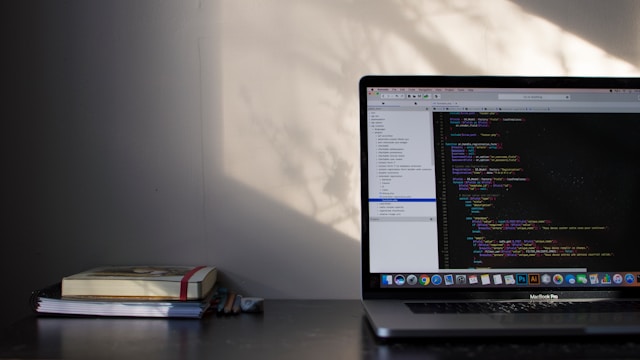Python is one of the most popular programming languages in the world, known for its simplicity, readability, and versatility. Whether you are new to programming or looking to add Python to your skill set, this beginner’s guide will help you get started with the basics of Python programming.
Why Python?
Python is an excellent choice for beginners and experienced developers alike for several reasons:
- Easy to Learn: Python’s syntax is straightforward and readable, making it an ideal language for beginners;
- Versatile: Python can be used for web development, data analysis, artificial intelligence, scientific computing, and more;
- Community Support: Python has a large, active community, which means plenty of resources, tutorials, and libraries are available to help you learn and solve problems.
Installing Python
Before you can start coding in Python, you need to install it on your computer. Here’s how:
- Download Python:
- Go to the official Python website and download the latest version of Python;
- Python 3.x is recommended as Python 2 is no longer supported.
- Install Python:
- Run the installer and follow the instructions. Make sure to check the option to add Python to your system PATH during installation.
- Verify Installation:
- Open your command prompt (Windows) or terminal (macOS/Linux);
- Type
python --versionorpython3 --versionand press Enter. You should see the installed Python version.
Writing Your First Python Program
Now that you have Python installed, let’s write your first Python program. Open a text editor or an Integrated Development Environment (IDE) like PyCharm, VS Code, or even IDLE (Python’s built-in IDE).
- Hello, World!
Create a new file named hello.py and add the following code:
print("Hello, World!")- Run Your Program:
- Save the file and open your command prompt or terminal;
- Navigate to the directory where your file is saved using the
cdcommand; - Type
python hello.pyorpython3 hello.pyand press Enter.
You should see Hello, World! printed on the screen. Congratulations, you’ve just written and executed your first Python program!
Understanding Basic Syntax
Python’s syntax is designed to be readable and straightforward. Here are some fundamental concepts and syntax rules you need to know:
- Variables:
Variables in Python do not require explicit declaration to reserve memory space. The declaration happens automatically when you assign a value to a variable.
name = "Alice"
age = 25- Data Types:
Python supports various data types including integers, floats, strings, and booleans.
integer_num = 10
float_num = 3.14
string_var = "Hello, Python"
boolean_var = True- Operators:
Python includes common operators such as arithmetic, comparison, and logical operators.
# Arithmetic Operators
addition = 5 + 3
multiplication = 5 * 3
# Comparison Operators
is_equal = 5 == 5
is_greater = 5 > 3
# Logical Operators
and_operation = True and False
or_operation = True or False- Control Flow:
Python uses indentation to define the blocks of code. This makes the code more readable.
# If-Else Statement
if age > 18:
print("Adult")
else:
print("Minor")
# For Loop
for i in range(5):
print(i)
# While Loop
count = 0
while count < 5:
print(count)
count += 1- Functions:
Functions are blocks of reusable code. You can define and call functions in Python as follows:
def greet(name):
print(f"Hello, {name}!")
greet("Alice")Working with Libraries
One of Python’s strengths is its vast ecosystem of libraries. Libraries like NumPy, pandas, and matplotlib make Python a powerful tool for data analysis and visualization.
- Installing Libraries:
You can install libraries using the pip package manager.
pip install numpy pandas matplotlib- Using Libraries:
Here’s a simple example of how to use these libraries:
import numpy as np
import pandas as pd
import matplotlib.pyplot as plt
# Creating a NumPy array
array = np.array([1, 2, 3, 4, 5])
# Creating a pandas DataFrame
data = {'Name': ['Alice', 'Bob', 'Charlie'], 'Age': [25, 30, 35]}
df = pd.DataFrame(data)
# Plotting a graph with matplotlib
plt.plot(array)
plt.title("Simple Plot")
plt.show()Next Steps
Now that you have a basic understanding of Python, here are some next steps to continue your learning:
- Practice Coding: The best way to learn Python is by writing code. Try solving problems on platforms like LeetCode, HackerRank, or Codewars;
- Build Projects: Start with small projects like a calculator, a to-do list app, or a simple web scraper to apply what you’ve learned;
- Explore Advanced Topics: As you become more comfortable with the basics, delve into advanced topics such as object-oriented programming, web development with Flask or Django, and data science with pandas and scikit-learn.
Conclusion
Getting started with Python is an exciting journey. With its simple syntax and powerful capabilities, Python is an excellent language for beginners and experienced developers alike. By following this guide and practicing regularly, you’ll be well on your way to becoming proficient in Python programming.
Happy coding!
